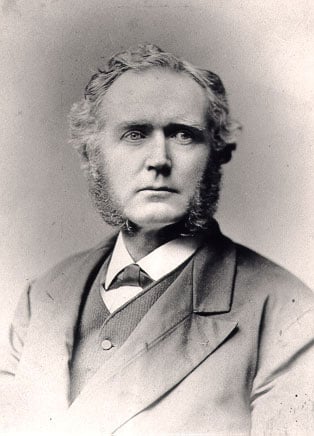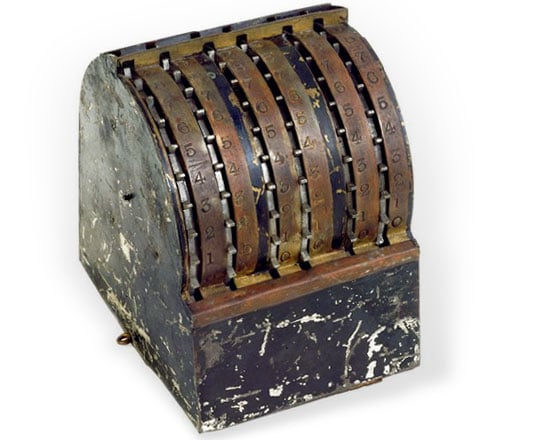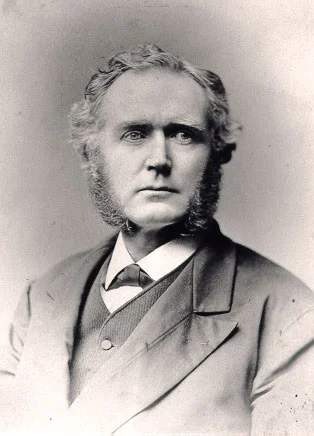
John Ballou Newbrough was a man of many talents and pursuits. From his early days as a student of medicine and dentistry, he was already making a name for himself by assisting the famous dentist Dr. F.S. Slosson. However, John’s thirst for adventure and discovery led him to head west to California, where he joined in the frenzy of the gold rush in 1848, and then to Australia. He held not one, but three U.S. patents for calculating devices, along with patents for many other inventions as well.
John Ballou’s Adding Machine
On March 13, 1860, a certain John Ballou of Cincinnati, Ohio, took out a US patent №27418, for a calculator. It seems the device never went into production and only the patent model survived to the present, kept in the National Museum of American History, Washington (see the lower image).
The inventor of this small and curious calculator was a remarkable man—John Ballou Newbrough (1828–1891), who during the 1840s and 1850s studied and lived in Cincinnati. John Ballou (see biography of John Ballou Newbrough) was called by some people America’s Greatest Prophet.
He practiced medicine and dentistry in Ohio and eventually made his way to California in 1849 to become a gold miner. After some time, John Ballou and his wife moved across the country to New York to continue his practices. It is here in New York, that he became associated with the New York Spiritual Association and his feats of psychic nature become well-known.
It was claimed that, he could paint in total darkness with both hands at once; that by closing his eyes, he could read printed pages of any book in any library; that he could bring back recollections of astral travels (or astral projections); that under control he could lift enormous weight, even a ton, without apparent effort.
In addition to all of these claims, he actually started a religious movement of people who named themselves the “Faithists of the Seed of Abraham”, which derived its name from the book “Oahspe” that he wrote as a new Bible. The members and John moved to Las Cruces, New Mexico to found a community there for the religion.
It must have been as easy as winking for such a powerful mind to devise this rather curious calculating instrument in the late 1850s. Actually, there are two other US patents (№21621 from 1858 and №24481 from 1859) for simple calculators, granted to John B. Newbrough of St. Louis.

The calculator of Ballou was a small metal and wood adding machine, with measurements: of 10 cm x 11.5 cm x 13.9 cm. It was somewhat similar to the Jabez Burns’ addometer, patented at the same time.
The lever-set adding device has a metal casing, painted black, and has a wooden bottom. The curved front of the machine has slots for six movable wheels, the right-hand wheel operated for units, the next for tens, etc. The part of the case to the right of each ring is marked with the digits from 0 at the bottom of the curve to 9 at the top. A crosswise shaft in the machine carries a series of six-toothed metal rings that fit between the openings in the case and serve as finger wheels, ratchets, and registers. The digits are inscribed around the edges of the rings, next to the teeth. One digit of each wheel is visible at the top of the machine, showing the result when numbers are entered by turning rings forward.
A tens carry mechanism is also provided—the left side of each ring has a pin (a shifter) every ten places, which drives the adjacent wheel when carrying is required.


